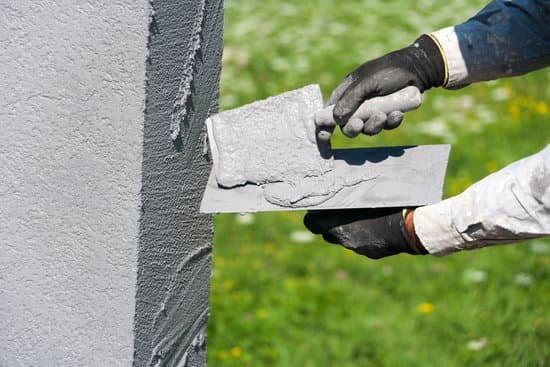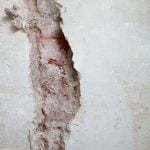Welcome to our article on “Where to Write Off Home Office Improvements.” If you’ve recently made improvements to your home office, it’s important to understand how these upgrades can benefit you financially. In this article, we will explore the different types of home office improvements that can be made and explain how to claim tax deductions for these expenses.
When it comes to home office improvements, there are various areas that can be enhanced. This includes renovating the physical space, purchasing new furniture or equipment, or installing technology upgrades. By making these enhancements, not only can you create a more productive work environment, but you may also be eligible for tax deductions.
Claiming tax deductions for home office improvements can significantly impact both individuals and businesses. The ability to write off these expenses can lead to substantial savings by reducing your taxable income. It is crucial to understand the eligibility criteria set by the IRS, ensuring that the space is used exclusively for business purposes and complies with their guidelines.
In the following sections of this article, we will delve into the specific criteria for deducting home office improvements, provide a comprehensive list of potential expenses that can be claimed, discuss necessary tax forms and documentation required, address any limitations or restrictions on deductions, and emphasize the importance of seeking professional guidance in navigating these complexities.
By the end of this article, you will have a clear understanding of where you can write off your home office improvements and how doing so can help maximize tax savings. So let’s dive in.
Understanding Home Office Improvements
One of the key aspects of taking advantage of tax deductions for home office improvements is understanding what types of improvements are eligible for write-offs. Home office improvements can encompass a range of expenses, including renovations to the physical space, purchases of furniture or equipment, and installation of technology upgrades. By investing in these improvements, individuals and businesses can create a more efficient and productive work environment while also potentially reducing their tax liability.
Renovating the physical space is a common type of home office improvement that can be written off. This may involve changes to the layout or structure of the office area, such as adding or removing walls, installing built-in shelves or cabinets, or upgrading flooring materials. These physical renovations not only enhance the aesthetics but also increase the functionality of the space.
Additionally, purchases of new furniture or equipment specifically for the home office can also be considered eligible expenses for write-offs. This includes items such as desks, chairs, file cabinets, bookshelves, and even specialized equipment like printers or teleconferencing devices. These purchases contribute to creating a comfortable and well-equipped workspace that supports productivity and efficiency.
Furthermore, investing in technology upgrades is another category of home office improvements that can be written off. This includes expenses related to computers, laptops, monitors, software programs, printers/scanners/copiers, and communication tools like routers or modems. Upgrading technological infrastructure helps individuals and businesses stay up-to-date with the latest advancements in their industry while increasing efficiency and facilitating smooth operations.
Ultimately, understanding the various types of home office improvements that are eligible for write-offs allows individuals and businesses to make informed decisions about how to best utilize these deductions. By creating a conducive work environment through renovations, purchasing necessary furniture or equipment, and investing in technology upgrades, individuals not only enhance their productivity but also gain potential financial benefits by claiming these expenses as tax deductions.
| Type of Improvement | Description |
|---|---|
| Renovations | Changes to the physical space, such as adding/removing walls or upgrading flooring materials. |
| Furniture or Equipment | Purchases of desks, chairs, file cabinets, bookshelves, and specialized equipment like printers or teleconferencing devices. |
| Technology Upgrades | Expenses related to computers, laptops, monitors, software programs, printers/scanners/copiers, and communication tools like routers or modems. |
Significance of Writing Off Home Office Improvements
Claiming tax deductions for home office improvements can be highly beneficial for individuals or businesses financially. By understanding the significance of writing off these expenses, taxpayers can minimize their tax liabilities and potentially increase their refunds.
One of the main benefits of claiming tax deductions for home office improvements is the ability to reduce taxable income. When eligible expenses are deducted, they effectively lower the amount of income that is subject to taxation. This means that individuals or businesses can potentially save a significant amount of money by reducing their overall tax burden.
Another advantage of writing off home office improvements is the opportunity to recoup some of the costs associated with renovating or equipping a workspace. Renovating a physical space, purchasing new furniture or equipment, and installing upgrades can often incur substantial expenses. However, by claiming deductions for these improvements, taxpayers can recover a portion of those costs through tax savings.
Additionally, claiming tax deductions for home office improvements can also provide financial relief in terms of cash flow. Rather than absorbing all renovation or improvement expenses upfront, individuals or businesses have the opportunity to spread out those costs over time by deducting them from their taxable income. This arrangement allows taxpayers to invest in creating an efficient and productive workspace while managing their financial resources effectively.
To ensure maximum benefit from writing off home office improvements, it’s important to understand and adhere to the IRS guidelines and eligibility criteria set forth for these deductions. This will help avoid any potential penalties or issues during tax audits. Seeking professional guidance from a tax professional or accountant who specializes in home office expenses is highly recommended to ensure compliance with regulations and make informed decisions regarding deductions.
Deduction Eligibility Criteria
Exclusivity of Space
One of the crucial criteria for deducting home office improvements is that the space must be used exclusively for business purposes. This means that the area in question should not double as a personal living space.
The Internal Revenue Service (IRS) guidelines state that the portion of your home designated as a home office should be used solely for conducting business-related activities and nothing else. If you use the space for personal purposes, even occasionally, you may not be eligible to claim deductions for that specific area.
It’s important to note that there are exceptions to exclusivity rules when it comes to certain parts of your home, such as common areas shared with family members or areas used by clients. These exceptions are known as “divided spaces.” In these cases, you can still claim deductions as long as the portion of the shared area is exclusively used for business purposes during regular business hours.
IRS Guidelines
In addition to exclusivity, it’s essential to meet the IRS guidelines in order to qualify for deductions on home office improvements. The IRS defines a qualifying home office as a space where individuals conduct core administrative or management tasks related to their trade or business. It should also be either their principal place of business or a location where they meet with clients or customers on a regular basis.
To determine if your home office meets the IRS guidelines, consider factors such as whether it’s regularly and exclusively used for work activities, whether it’s your primary place of business, and if you have another fixed location where substantial administrative tasks are carried out.
Keeping Detailed Records
Proper record-keeping is vital when claiming deductions for home office improvements. Maintain thorough documentation like invoices, receipts, contracts, and any other supporting materials that demonstrate the expenses incurred and the necessity of those improvements. These records act as evidence in case of an audit by the IRS.
Additionally, accurately calculating and documenting the square footage of your home office space is necessary to determine the percentage of your home that can be allocated as a deduction for improvements. This calculation requires measuring both the area devoted solely to business purposes and the total area of your home.
By understanding and meeting these specific criteria, individuals and businesses can confidently claim deductions for their home office improvements, assisting them in maximizing their tax-saving opportunities. Remember to consult a tax professional or accountant if you have any doubts or need personalized advice on navigating this process.
Expenses that Can be Written Off
Expenses That Can be Written Off
When it comes to writing off home office improvements, there are a variety of expenses that can potentially be claimed as deductions. These deductions can help individuals or businesses save money on their taxes and provide financial benefits in the long run. Here is a comprehensive list of potential home office improvement expenses that may be eligible for write-offs:
Insulation
The cost of insulating your home office space can often be deducted. Proper insulation not only improves energy efficiency but also creates a more comfortable work environment.
Security Systems
Investing in security systems, such as cameras or alarms, can also be considered as deductible expenses. Safeguarding your home office not only protects your valuable assets but may also qualify for tax relief.
Lighting
Upgrading the lighting in your home office can significantly improve productivity and create a pleasant atmosphere for work. The cost of installing new light fixtures, LED bulbs, or even adding additional lighting sources may be eligible for deduction.
Shared Common Area Renovations
If you share common spaces with other tenants or residents in the building where your home office is located, certain renovations or improvements to these shared areas might qualify for deductions. Examples could include upgrading a shared lobby, hallway, restroom facilities, or common areas like meeting rooms.
Furniture and Fixtures
Purchasing new furniture or fixtures specifically for your home office can often be written off as an expense. This includes items such as desks, chairs, bookshelves, filing cabinets, and decorative elements like artwork or plants.
It is important to note that while these expenses can potentially be claimed as deductions for home office improvements, they must meet specific criteria outlined by the IRS. It is advisable to consult with a tax professional or accountant to ensure compliance with the regulations and maximize available deductions. Proper documentation and record-keeping are also essential to substantiate these expenses and support any claims made.
Tax Forms and Documentation
One of the most important aspects of successfully writing off home office improvements is ensuring that you have the necessary tax forms and documentation in place. This will not only help you accurately claim deductions for your expenses but also ensure compliance with IRS regulations. In this section, we will guide you on the specific tax forms to use and the required documentation to support your claims.
When claiming deductions for home office improvements, the primary tax form you will need to use is Form 8829, also known as the “Expenses for Business Use of Your Home.” This form allows you to calculate your actual expenses related to your home office and determine the portion that can be deducted. It captures various categories of home office-related expenses, including repairs and maintenance, utilities, insurance, and depreciation.
In addition to Form 8829, it is crucial to maintain proper documentation to substantiate your claims. The IRS typically requires taxpayers to keep records that show the amount spent on each improvement, their date of purchase or installation, as well as any relevant invoices or receipts. It is important to note that if an improvement is made solely for the purpose of your business, it may be classified as a capital expense and would need to be depreciated over time.
| Required Documents | Description |
|---|---|
| Invoices or Receipts | Proof of purchase or payment for home office improvements. |
| Contract or Agreement | Documentation specifying details of any contracts or agreements related to the improvements. |
| Before and After Photos | Photographic evidence of the condition before and after the improvements were made. |
It is important to note that the documentation requirements may vary depending on the nature and cost of your home office improvements. Therefore, it is recommended to maintain thorough records and consult with a tax professional or accountant for specific guidance tailored to your situation.
By using the correct tax forms and having complete and accurate documentation, you can not only ensure compliance with IRS regulations but also maximize the deductions you can claim for your home office improvements. Taking these steps will provide you with peace of mind during tax season and help you make the most out of this tax-saving opportunity.
Restrictions and Limitations
When it comes to writing off home office improvements, it is important to be aware of the restrictions and limitations that may apply. While there are tax benefits to claiming deductions for these expenses, there are certain guidelines and thresholds that need to be considered. This section will address some of the common restrictions and limitations that individuals or businesses may encounter when writing off home office improvements.
One restriction to keep in mind is the cap on deductible expenses. The IRS sets limits on how much can be claimed as a deduction for certain types of home office improvements. For example, if you have a dedicated home office space within your residence, you may be eligible to write off a portion of your mortgage interest or rent expenses. However, there is typically a cap on the amount that can be deducted.
In addition to caps on deductible expenses, there may also be limitations for certain types of improvements. While some home office improvements such as insulation or security systems may qualify for deductions, others may not be eligible. For example, cosmetic upgrades or renovations that do not directly contribute to the functionality of your home office space may not qualify for deductions. It is important to consult IRS guidelines or seek professional advice to determine which improvements are eligible for deductions.
Overall, it is crucial to understand the various restrictions and limitations that come with writing off home office improvements. By being aware of these factors, individuals and businesses can effectively maximize their tax savings while ensuring compliance with IRS regulations. Consulting a tax professional or accountant can provide valuable guidance tailored to your specific circumstances and help navigate any potential restrictions or limitations that apply in your situation.
- Be aware of caps on deductible expenses
- Some types of improvements may not qualify
- Consult IRS guidelines or seek professional advice
Seeking Professional Guidance
When it comes to claiming tax deductions for home office improvements, seeking professional guidance from a tax professional or accountant is highly recommended. These experts are well-versed in the ever-changing tax laws and regulations and can provide personalized advice tailored to individuals or businesses.
One of the key reasons why consulting a tax professional or accountant is crucial is their ability to provide valuable insights. They have extensive knowledge and experience in navigating the complexities of tax codes, ensuring that individuals or businesses can maximize their deductions while staying compliant with IRS regulations. They can help identify all eligible expenses that can be written off, including those that may not be commonly known.
Moreover, a tax professional or accountant can effectively guide individuals or businesses through the process of claiming deductions for home office improvements. They are familiar with the necessary tax forms to use and can assist in accurately completing them. Additionally, they understand the importance of proper documentation and can advise on what supporting records need to be kept to substantiate the claims made.
Furthermore, with their expertise, tax professionals or accountants can navigate any restrictions or limitations that may apply when writing off home office improvements. They can inform individuals or businesses about any caps on deductible expenses or limitations specifically associated with certain types of improvements. This knowledge ensures that taxpayers are aware of any potential limitations before making decisions regarding their home office improvements.
Conclusion
In conclusion, understanding the process and benefits of writing off home office improvements can greatly contribute to financial savings for individuals and businesses. By making improvements to their home office spaces, individuals can not only enhance their productivity but also take advantage of tax deductions.
It is important to remember that in order to qualify for these deductions, specific eligibility criteria must be met. The space must be used exclusively for business purposes and should comply with the guidelines set forth by the IRS.
A wide range of expenses associated with home office improvements are eligible for deductions, such as insulation, security systems, lighting, and even renovations in shared common areas. However, it is essential to select the appropriate tax forms and maintain proper documentation to support these claims. Adhering to IRS regulations ensures compliance while maximizing deductions.
It is worth mentioning that certain restrictions and limitations may apply when writing off home office improvements. For example, there may be a cap on deductible expenses or limitations on certain types of improvements. To navigate through these nuances effectively, seeking professional guidance from a tax consultant or accountant is highly recommended. Their expertise can provide valuable insights tailored to specific circumstances, helping individuals optimize their deductions while staying within legal boundaries.
In summary, correctly writing off home office improvements offers significant benefits in terms of reducing taxable income and increasing overall financial savings. It is a tax-saving opportunity that should not be overlooked.
By understanding the eligibility criteria, documenting expenses properly, and seeking expert advice if needed, individuals can make the most of this incentive provided by the government. Taking advantage of this opportunity enables both individuals and businesses to invest in improving their workspaces while simultaneously maximizing their tax benefits.
Frequently Asked Questions
Can I write off improvements to my home office?
Generally, you can write off improvements to your home office if they meet certain criteria. The key factor is that the improvements must be exclusively for your business use and not for personal purposes.
The IRS allows you to deduct a portion of your home expenses, including improvements, based on the percentage of your home that is used for business purposes. However, it’s important to keep in mind that there are specific rules and limitations when it comes to writing off home office improvements, so consulting with a tax professional or referring to IRS guidelines is recommended.
How do you write off office renovation costs?
To write off office renovation costs, you need to determine whether the renovations are considered repairs or improvements. Repairs typically restore the property to its original condition and can be deducted in the year they occur. On the other hand, improvements enhance the value or prolong the life of the property and need to be depreciated over time.
Renovations that qualify as improvements would typically fall under capital expenditures rather than immediate deductions. It’s important to keep track of all renovation costs and obtain proper documentation such as receipts and invoices. Consulting with a tax professional or reviewing IRS guidelines specific to business expenses will help ensure you accurately write off office renovation costs.
How do you depreciate home office improvements?
Home office improvements are usually depreciated over a specified period using either the Modified Accelerated Cost Recovery System (MACRS) or a straight-line method allowed by the IRS. Depreciation allows you to deduct a portion of these improvement costs each year over their useful life rather than claiming them as an immediate deduction. The depreciation period varies depending on factors such as the type of improvement made and its expected lifespan.
It’s crucial to maintain detailed records of your home office improvement costs as well as any relevant supporting documentation required by the IRS when depreciating these expenses. A tax professional can provide guidance on properly depreciating home office improvements within applicable tax laws and regulations

I’m thrilled to have you here as a part of the Remodeling Top community. This is where my journey as an architect and remodeling enthusiast intersects with your passion for transforming houses into dream homes.





